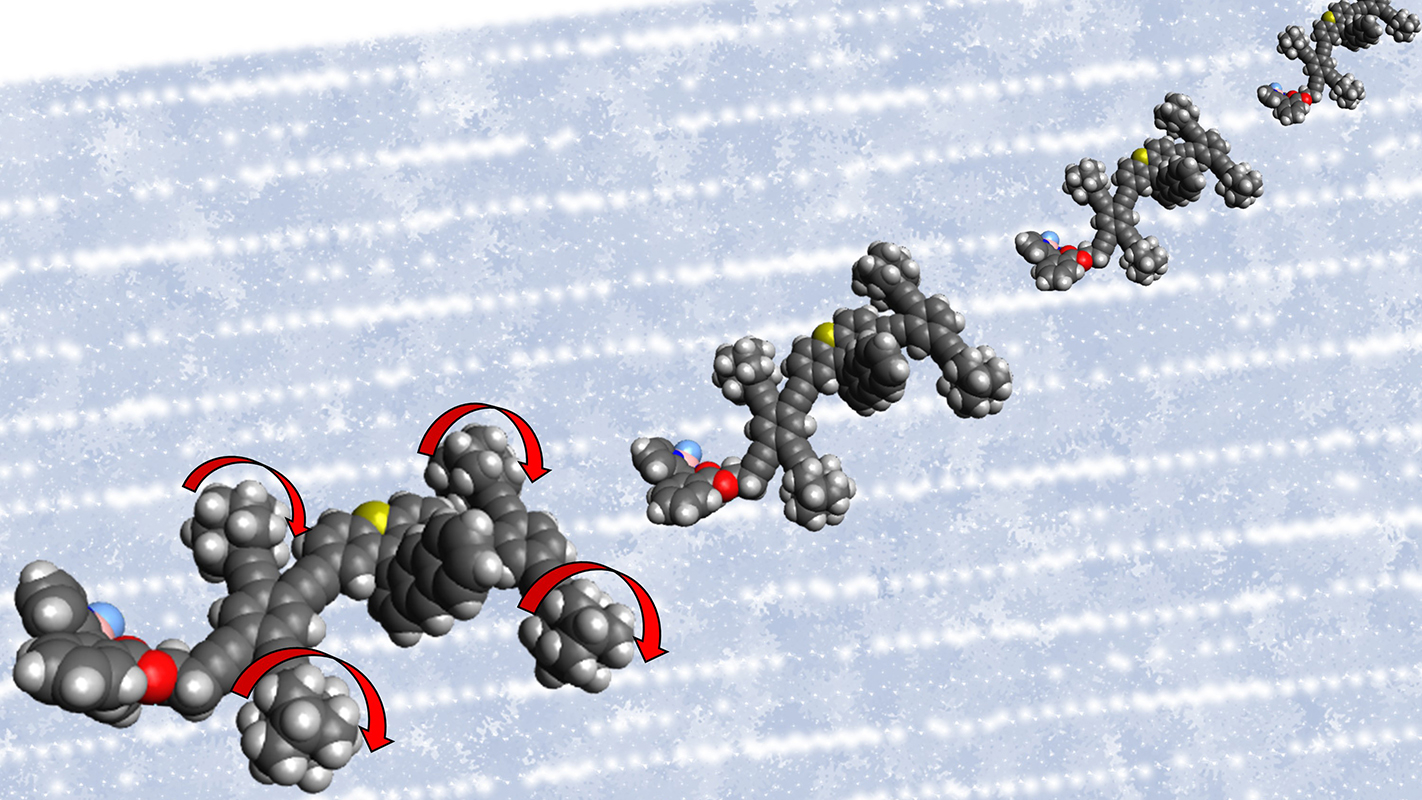Rocky Road: Nanocars Roll, Hop and Skid Across Surfaces

Driving a nanocar across a glass surface at room temperature may be more like off-roading in rocky back country than gliding along the highway. But even with all the bouncing, a nanocar’s rolling wheels can still move the vehicle in a straight line in distances up to 16 times its body length, according to new research from NC State and Rice University.
Nanocars – single molecule vehicles with four groups of adamantane serving as wheels – have the potential to become nanoscopic delivery vehicles at the molecular level for small molecule drugs, proteins or genes.
But for that to happen, researchers need to be able to make the vehicles move predictably, which means they need to understand how nanocars behave in ambient, or room temperature, conditions. NC State chemist Gufeng Wang and Rice chemist James Tour set out to see exactly what happens when a nanocar’s rubber meets the road – or adamantane meets the glass.
“Most single molecules randomly ‘hop’ on a solid surface,” says Wang. “Nanocar molecules are different. They have a chassis, two axes and four wheels. We have observed their wheels rolling on surfaces in ultracold vacuum conditions. But at room temperature, some researchers suspect that the nanocars could mainly be hopping, pivoting, or even skidding across the surface due to thermal activity – the constant motion of molecules or atoms at temperatures above absolute zero.”
The researchers’ challenge was developing a method that would let them watch the nanocars move in ambient conditions. Scanning tunneling microscopy, the most commonly used method for observing a nanocar’s motion, works well in ultracold vacuum, because the car’s motion is slowed. But in ambient conditions, the microscope’s one minute per frame time resolution was much too slow to show what was actually happening.
Wang and Tour utilized a method known as line-imaging in order to improve the observation time resolution from one minute to 0.2 seconds per frame.
They observed the nanocars moving in a straight line for short periods of time – approximately 1.2 seconds, during which they covered about 50 nanometers worth of distance – then veering off course. The researchers believe this may be due to the car’s body hopping off the surface of the glass and pivoting while in the air – like when a truck or jeep hits a rock or divot while driving off-road.
“Line imaging let us see that the nanocars mainly roll their wheels on the surface, but that they also hop or pivot,” Wang says. “We conjecture that by decreasing the temperature, we can eliminate the hopping and pivoting. Thus, we can drive the nanocars and keep their directions using the traction force between the wheels and the surface.”
The researchers’ next steps will be to add a molecular motor to the nanocar that will allow them to drive it with light.
The work appears in The Journal of Physical Chemistry C.
This post was originally published in NC State News.